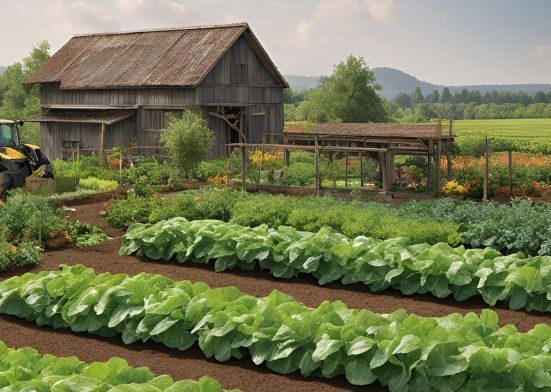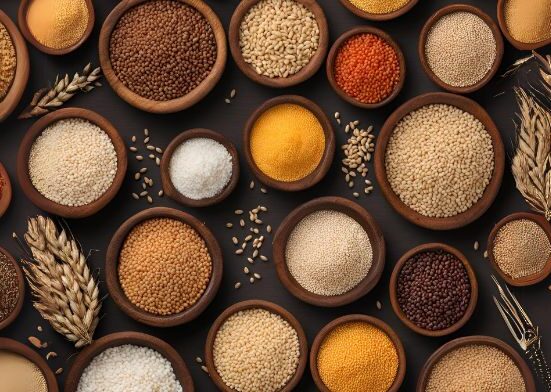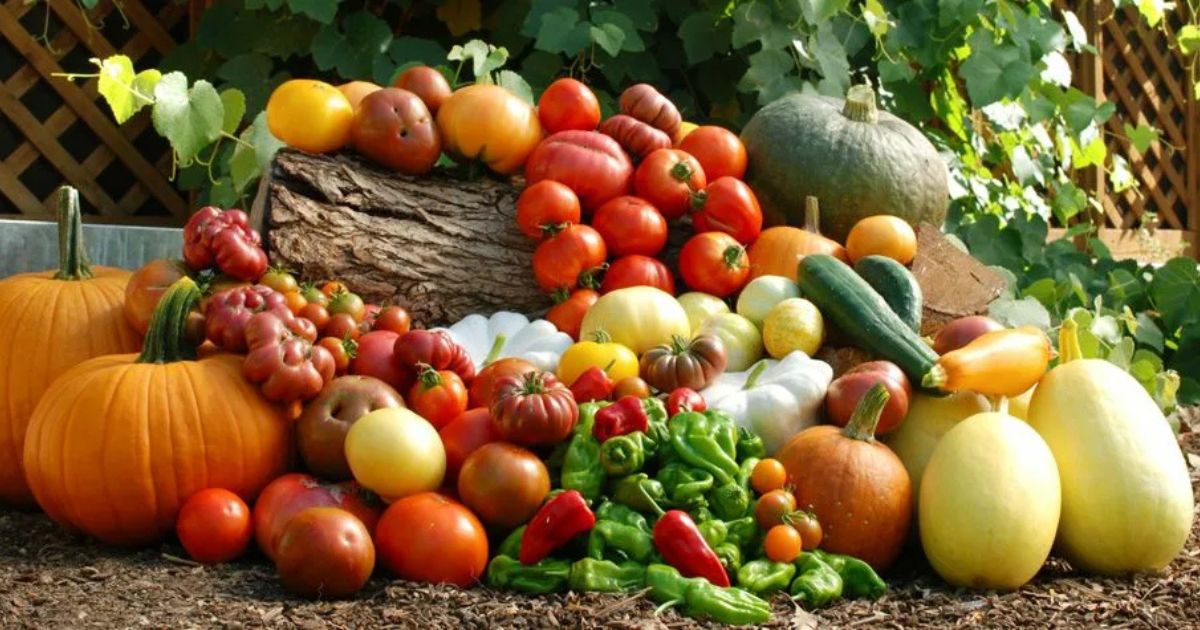Autumn Harvesting marks one of the agricultural year’s most vibrant and essential periods. As the air turns crisp and the days grow shorter, farms and gardens across temperate regions bustle with activity, gathering the final yields before winter sets in. This season is renowned for its rich bounty of crops, hearty vegetables, and visually striking ornamental plants that define the natural beauty of fall. The fall harvest is more than just a seasonal transition—it plays a crucial role in food production, storage, and preparation for the colder months ahead. From fields of golden corn to baskets of pumpkins, the abundance of autumn supports both rural economies and seasonal traditions.
In this post, you’ll explore the full spectrum of what autumn harvesting entails. We’ll showcase key seasonal crops and vegetables, such as squash, apples, and root vegetables, along with stunning photos of fall foliage and ornamental plants like chrysanthemums and asters. Whether you’re a gardening enthusiast, a food lover, or captivated by the colors of fall, this guide offers an inspiring and informative look into the heart of the autumn harvest season.
Autumn Harvesting: A Brief Overview
Autumn harvesting marks the final and often most rewarding phase of the agricultural year. As the days grow shorter and temperatures begin to cool, farmers across regions gather mature crops that have been nurtured through spring and summer. This season of abundance is a crucial part of the agricultural calendar, offering not only food security for the months ahead but also opportunities for communities to celebrate the land’s most profitable fall crop Stardew Bounty.
In this post, you’ll explore the wide variety of seasonal crops, vegetables, and ornamental plants that define the fall harvest. From vibrant pumpkins and sweet apples to hardy leafy greens and decorative chrysanthemums, we’ll guide you through what thrives in autumn. Expect practical insights, growing tips, and a gallery of stunning visuals that capture the beauty and productivity of the The Fascinating History of the Jack o Lantern season.
The Importance of the Fall Harvest in the Agricultural Calendar
The fall harvest marks a pivotal time in the agricultural calendar when months of hard work and careful cultivation culminate in an abundant yield. As temperatures cool and days shorten, farmers gather a wide variety of crops that thrive in autumn’s mild climate—ensuring food security, economic stability, and seasonal celebrations around the world. This post takes you on a visual and informative journey through the richness of the autumn harvest. Readers can expect to explore a vibrant array of seasonal crops, hearty vegetables, and ornamental plants, accompanied by stunning photos that capture the beauty and bounty of fall. Whether you’re a gardener, foodie, or curious nature lover, this guide brings the fall produce in season golden season to life.
What Readers Can Expect from This Post:
In this post, readers will discover a vibrant guide to autumn harvesting. Expect a rich exploration of seasonal crops, nutrient-packed vegetables, and ornamental plants that thrive in the fall. Alongside helpful growing tips and harvest timelines, the post features stunning visuals that capture the colors and textures of the season, bringing the what is in autumn beauty of the autumn harvest to life.
Autumn Harvesting
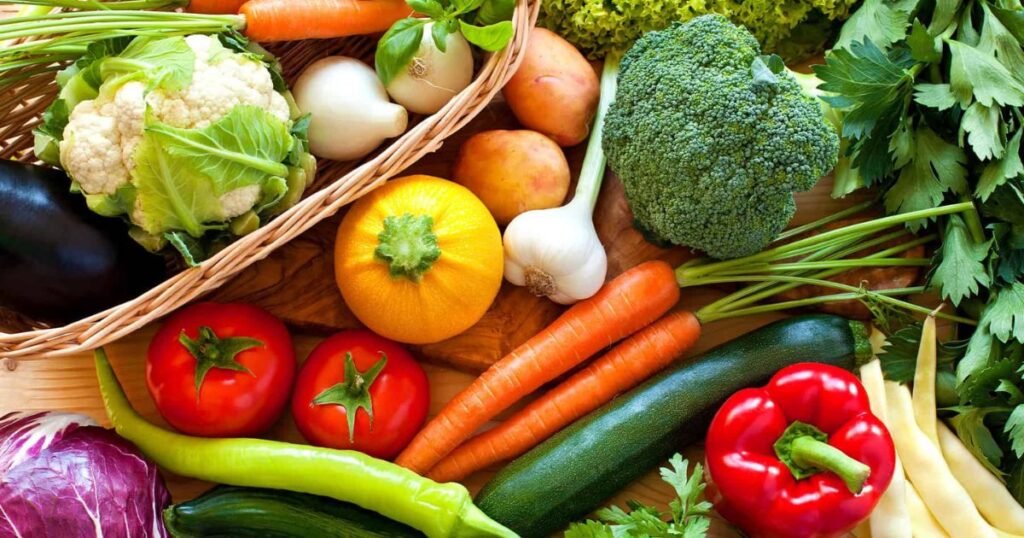 Autumn harvesting refers to the collection of crops, fruits, vegetables, and plants that reach maturity in the fall season. As summer fades and temperatures cool, this transitional period presents a final chance to gather a wide variety of seasonal produce before winter arrives. From apples and pumpkins to root vegetables like carrots and beets, the autumn harvest is both agriculturally vital and culturally symbolic.
Autumn harvesting refers to the collection of crops, fruits, vegetables, and plants that reach maturity in the fall season. As summer fades and temperatures cool, this transitional period presents a final chance to gather a wide variety of seasonal produce before winter arrives. From apples and pumpkins to root vegetables like carrots and beets, the autumn harvest is both agriculturally vital and culturally symbolic.
Definition of Autumn Harvesting
Autumn harvesting is the process of gathering mature crops during the fall season, typically between late September and early November in temperate regions. It marks the culmination of months of cultivation, where farmers and gardeners reap the rewards of their spring and summer labor. This period is crucial for stocking food supplies and preparing for the upcoming colder best fall crops stardew What Is an Orchard months.
When Does Autumn Harvesting Typically Occur (By Region or Climate Zone)?
The timing of autumn harvesting varies by region and climate. In temperate zones, such as North America and Europe, harvests typically begin in late September and continue through November. In colder climates, harvesting starts earlier to avoid frost damage. Crop type and elevation also influence the specific timing.
Role of Weather and Daylight in Determining Harvest Times
Weather patterns and daylight length play a key role in autumn harvesting. As daylight hours shorten and temperatures drop, plant growth slows, signaling maturity in many crops. Farmers monitor weather forecasts closely to avoid losses from early frosts, heavy rains, or sudden cold snaps. Proper timing ensures maximum yield, optimal flavor, and better storage life.
Historical and Cultural Significance (e.g., Harvest Festivals)
Autumn harvests have long held cultural and historical importance. Across civilizations, they marked the end of the growing season and were celebrated with festivals, feasts, and rituals of gratitude. From the ancient Roman “Pomona” festival to Thanksgiving in the United States and the Mid-Autumn Festival in China, these events honor the land’s bounty and foster community spirit.
Popular Seasonal Fall Crops
Autumn is a crucial time for harvesting many nutrient-rich crops that thrive during cooler temperatures. These fall favorites autumn and harvest play a vital role in food security and seasonal diets worldwide.
Grains and Staples
Fall is the prime harvesting season for a variety of staple grains.
- Wheat: A hardy grain harvested in late summer to early fall, essential for bread, pasta, and baking.
- Barley Is Known for its rapid growth cycle and is a versatile grain used in soups, cereals, and beer.
- Corn (Maize): Often harvested in early to mid-fall, corn is used in food, animal feed, and industrial products.
- Rice (in warm climates): In regions with warmer fall weather, rice fields are drained and harvested during the autumn months.
Root Vegetables
Root crops flourish in cooler soils, developing robust flavor and sweetness.
- Potatoes: A fall staple, potatoes are harvested when their vines die back, ideal for storage and winter meals.
- Carrots: Sweet and crisp, fall-harvested carrots benefit from chilly weather, which enhances their natural sugars.
- Beets: These earthy, nutrient-dense roots are harvested before the first hard frost.
- Turnips: Fast-growing and cold-hardy, turnips are ideal for fall soups and stews.
Legumes and Beans
Leguminous crops provide plant-based protein and are often harvested in the early to mid-autumn season.
- Soybeans: Typically harvested when the pods dry and turn brown, soybeans are essential for oils, tofu, and animal feed.
- Kidney Beans: These robust, red beans are ready for picking in early fall, making them perfect for hearty dishes like chili.
- Chickpeas: A cool-season crop that reaches maturity in autumn, chickpeas are used in hummus, stews, and salads.
Regional Variations in Fall Harvesting
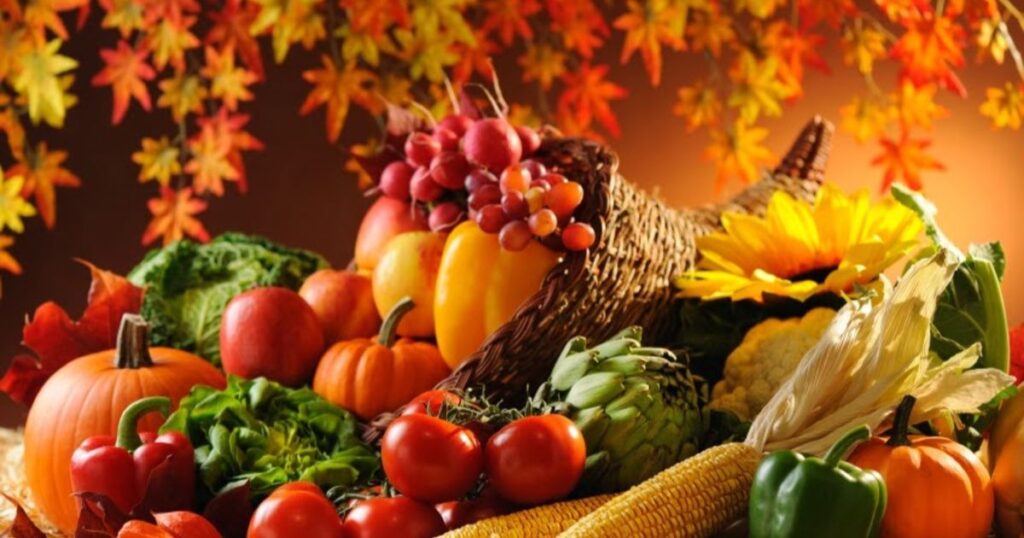 Autumn harvests look vastly different around the world due to varying climates, agricultural practices, and cultural traditions. From the pumpkin patches of North America to rice paddies in Southeast Asia, regional differences shape the crops grown and the timing of their harvest. These variations reflect the combination of climate zones and traditional knowledge that defines the rhythm of the agricultural calendar in each fall seasonal fruits Lilac Flower: Meaning Growing Tips and Seasonal Beauty region.
Autumn harvests look vastly different around the world due to varying climates, agricultural practices, and cultural traditions. From the pumpkin patches of North America to rice paddies in Southeast Asia, regional differences shape the crops grown and the timing of their harvest. These variations reflect the combination of climate zones and traditional knowledge that defines the rhythm of the agricultural calendar in each fall seasonal fruits Lilac Flower: Meaning Growing Tips and Seasonal Beauty region.
Temperate Zones: North America, Europe, East Asia
In temperate regions, fall is a critical season for harvesting grains, fruits, and root vegetables. In North America and Europe, farmers gather apples, pumpkins, corn, potatoes, and squash during the crisp autumn months. East Asia is known for the cultivation of rice, sweet potatoes, and leafy greens, such as Napa cabbage. Cool nights and shorter days enhance the flavor and storage life of many crops, making fall an ideal time for bringing in the year’s bounty.
Tropical/Subtropical Zones: South Asia, South America, Africa
In tropical and subtropical areas, fall harvesting is influenced more by monsoon cycles or dry seasons than by temperature changes. South Asia typically sees rice, millet, and pulses harvested in the autumn after the monsoon ends. In South America, sugarcane, maize, and tropical fruits are common. African farmers may gather cassava, sorghum, and yams. These regions often experience staggered or year-round harvests depending on rainfall and altitude.
Crops That Vary by Location
Fall crops differ significantly by region. While apples dominate autumn in the U.S. and Europe, tropical countries may focus on bananas, plantains, or cacao. Root vegetables, such as beets and carrots, thrive in cool soil, favoring temperate areas, while crops like taro and ginger are more suited to tropical climates. These differences reflect the local environment, market demands, and centuries of fall harvesting adaptation.
How Local Traditions and Climates Affect Harvesting Practices
Harvest traditions—from Thanksgiving in North America to harvest festivals in India and China—celebrate the season’s abundance. In cooler regions, farmers race against frost, using mechanized equipment to collect large-scale crops. In warmer climates, harvesting may still be done by hand and spaced out over weeks. These practices, shaped by generations of knowledge and environmental conditions, ensure that communities worldwide reap their crops at the perfect moment for taste, yield, and fall farming preservation.
Tools, Techniques, and Tips for a Successful Autumn Harvest
Autumn brings a crucial window for harvesting crops at their peak. To maximize yield and quality, farmers and gardeners need the right tools, effective harvesting methods, and strategic planning. From simple hand tools to advanced machinery, each plays a role in ensuring an efficient and bountiful harvest season.
Hand Tools vs. Mechanical Harvesting
Choosing between hand tools and mechanical equipment depends on the scale of your farming operation. Hand tools, such as pruners, sickles, and garden forks, offer precision and control, making them perfect for small plots. In contrast, mechanical harvesters increase speed and reduce labor in large-scale operations, making them ideal for commercial fall seasonal farms.
Signs That Crops Are Ready to Harvest
Knowing when to harvest is key to preserving flavor, texture, and nutritional value. Common signs include changes in color, texture, and firmness. For example, squash hardens, apples deepen in hue, and root crops push up from the soil—each signaling it’s time to gather the bounty.
Storage and Preservation of Fall Produce
Proper storage ensures your hard-earned harvest doesn’t go to waste. Cool, dark, and well-ventilated areas are ideal for storing root vegetables. Canning, drying, and freezing extend the shelf life of fruits and herbs. Labeling and rotating stock also helps maintain freshness.
Soil Preparation for Next Season
Post-harvest is the perfect time to nourish the soil for the next planting cycle. Incorporating compost, cover crops, or mulch helps retain moisture, prevent erosion, and restore nutrients. Testing and amending soil pH levels ensures optimal conditions come springtime.
Sustainability and Autumn Harvesting
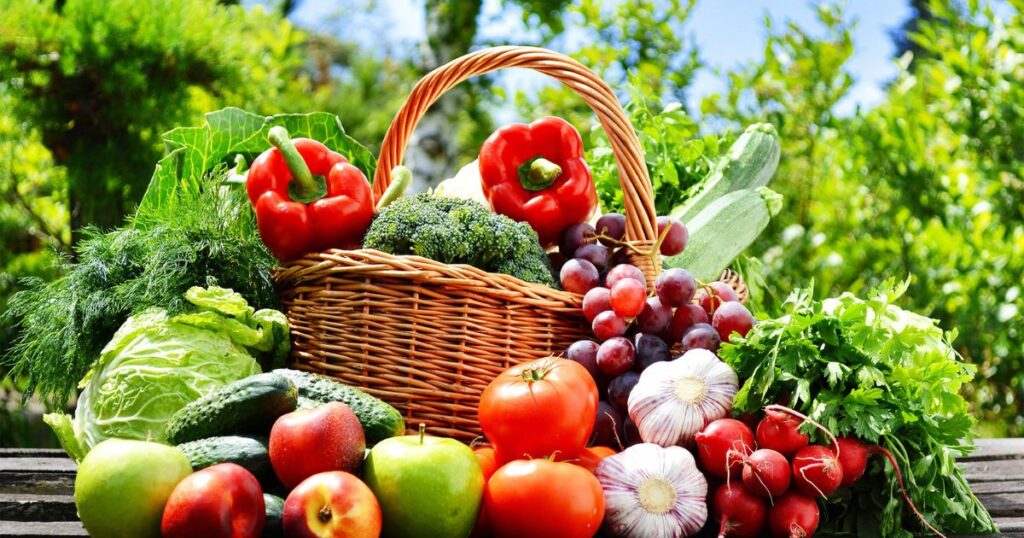 Autumn harvesting plays a crucial role in sustainable agriculture by emphasizing mindful crop selection, minimizing waste, and reducing environmental impact. It encourages farmers and gardeners to align their practices with nature’s rhythm, preserving ecosystems while reaping seasonal rewards.
Autumn harvesting plays a crucial role in sustainable agriculture by emphasizing mindful crop selection, minimizing waste, and reducing environmental impact. It encourages farmers and gardeners to align their practices with nature’s rhythm, preserving ecosystems while reaping seasonal rewards.
Crop Rotation and Soil Health
Practicing crop rotation during the fall helps restore soil nutrients, break pest and disease cycles, and boost long-term fertility. Rotating autumn crops, such as legumes and brassicas, revitalizes the land and promotes healthier yields in the following seasons.
Composting Fallen Leaves and Plant Waste
Fallen autumn leaves and garden clippings can be turned into nutrient-rich compost. Composting these natural materials reduces landfill waste, enriches garden soil, and creates a closed-loop system that supports sustainable farming and gardening.
Supporting Local Farmers and Seasonal Produce
Buying seasonal fall produce from local farmers reduces food miles, supports community economies, and ensures fresher, tastier harvests. Farmers markets and CSAs often overflow with pumpkins, root vegetables, and leafy greens in autumn, making it the perfect time to eat local.
Organic and Eco-Friendly Practices
Adopting organic methods and eco-conscious strategies during the autumn season—like using natural mulches, avoiding synthetic fertilizers, and preserving pollinator habitats—enhances biodiversity and protects the environment for future harvests.
Autumn Harvest in Culture and Celebrations
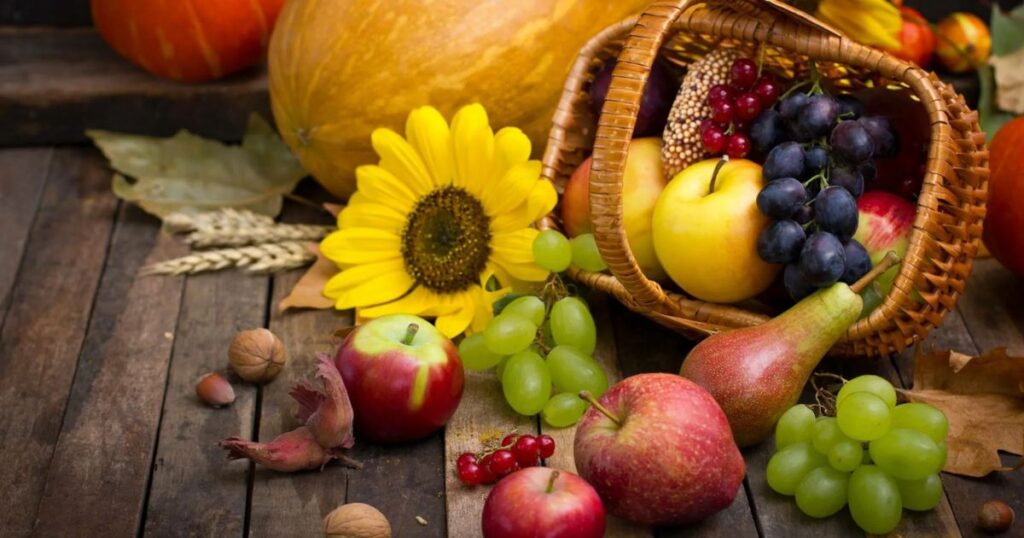 The autumn harvest has long been a source of inspiration, tradition, and communal joy worldwide. As crops reach full maturity, many cultures mark this time with vibrant festivals and heartfelt rituals that express gratitude for nature’s abundance. These celebrations not only highlight agricultural success but also bring communities together to share food, honor the seasons, and pass down rich cultural customs.
The autumn harvest has long been a source of inspiration, tradition, and communal joy worldwide. As crops reach full maturity, many cultures mark this time with vibrant festivals and heartfelt rituals that express gratitude for nature’s abundance. These celebrations not only highlight agricultural success but also bring communities together to share food, honor the seasons, and pass down rich cultural customs.
Thanksgiving (North America)
Thanksgiving is a cornerstone of North American autumn culture, particularly in the United States and Canada. Rooted in historical harvest feasts, it is celebrated with family gatherings, hearty meals—featuring turkey, pumpkin pie, and seasonal vegetables—and an emphasis on thankfulness. While modern traditions vary, the spirit of gratitude and sharing remains at the heart of the celebration.
Mid-Autumn Festival (China)
The Mid-Autumn Festival, also known as the Moon Festival, is one of China’s most cherished cultural events. Celebrated on the 15th day of the 8th lunar month, it honors the harvest moon and the season’s bounty. Families gather to enjoy mooncakes and light lanterns and share stories of Chang’e, the moon goddess. It is a time for reunion and reflection under the glowing full moon.
Harvest Moon and Harvest Fairs
The Harvest Moon—the full moon nearest the autumn equinox—has long been celebrated in folklore and tradition. Many cultures believe it symbolizes the peak of the harvest season. In rural areas, harvest fairs often accompany this lunar event, offering local produce, crafts, games, and communal feasting. These fairs celebrate both the land’s yield and rural heritage.
Symbolism of Abundance and Gratitude
Across cultures, the autumn harvest symbolizes more than just food—it represents abundance, preparation for winter, and gratitude for life’s blessings. Golden fields, overflowing baskets, and the act of gathering together embody themes of nourishment and shared prosperity. These symbols are often found in art, literature, and religious observances during the fall season, reminding people to appreciate what they have and to give thanks.
Stunning Fall Harvest Photos (Gallery Section)
Immerse yourself in the vibrant beauty of autumn with our high-resolution photo gallery showcasing the heart of the fall harvest season. Explore breathtaking images of golden fields, colorful fall foliage, and freshly harvested crops and vegetables. See before-and-after shots that highlight the dramatic transformation of fields through the harvest. Witness the dedication of farmers captured in action and enjoy artfully arranged displays of pumpkins, gourds, corn, and other seasonal produce that celebrate the abundance of autumn. Each photo tells a visual story of nature’s most fruitful season.
Conclusion:
Autumn harvesting is a vibrant celebration of nature’s bounty, bringing together a rich array of seasonal crops, vegetables, and plants. As leaves turn golden and temperatures cool, farmers and gardeners alike gather nutritious produce like pumpkins, squash, apples, and kale. This season not only nourishes our bodies but also offers breathtaking scenery and a deeper connection to the land. With every harvest basket filled and every photo captured, autumn reminds us of the beauty in change and the rewards of patience. Whether for food, decoration, or tradition, the fall harvest continues to inspire and sustain us each year.
FAQ:
What is Autumn Harvesting?
Autumn harvesting refers to the process of gathering mature crops during the fall season, typically from September to November. This seasonal harvest features a diverse range of fruits, vegetables, grains, and ornamental plants that thrive in cooler temperatures.
Why is Autumn an Important Harvesting Season?
Autumn is crucial for harvesting because it marks the end of the growing season for many crops. It’s the final opportunity to collect produce before frost or winter sets in, ensuring a steady food supply through the colder months.
What Crops are Commonly Harvested in the fall?
Common autumn crops include pumpkins, squash, sweet potatoes, carrots, beets, corn, apples, pears, and late-season leafy greens like kale and spinach.
Which Vegetables Grow best in Autumn?
Root vegetables such as turnips, radishes, and parsnips thrive in the fall, along with cruciferous vegetables like broccoli, cauliflower, and Brussels sprouts. These crops prefer the cooler, moist conditions of fall.
Are there Specific Fruits Harvested During Autumn?
Yes, popular autumn fruits include apples, pears, grapes, persimmons, and cranberries. These fruits reach peak ripeness and flavor during the fall season.




